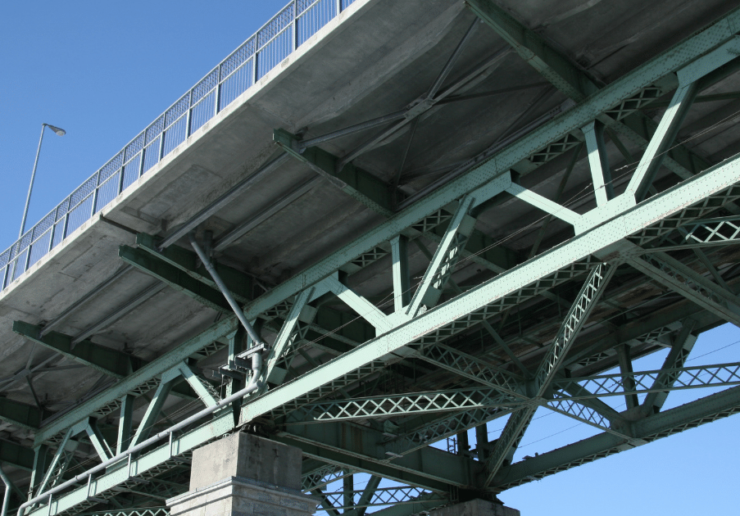A709 is a high-strength, low-alloy steel plate that is often used in the manufacturing of bridges. Kloeckner Metals routinely stocks A709 nationwide.

Kloeckner Metals offers A709 steel plate in grade 50W. This steel plate is often stocked in the flat-rolled, as-in condition. It is excellent for building bridges and similar applications.
ASTM A709 grade 50 steel plate has good corrosion resistance, low formability for some grades, higher strength, and a higher cost.
It is used in many industries, primarily in manufacturing and construction.
If it is properly designed, it can be used for many applications in the unpainted condition including:
Its machinability is fair. Since it is an alloy steel, it is tougher to machine than plain carbon steel.
It is weldable by all conventional methods.
Heat treatment is not required.
ASTM A709 grade 50 steel plate has good corrosion resistance, low formability for some grades, higher strength, and a higher cost.
It is used in many industries, primarily in manufacturing and construction.
If it is properly designed, it can be used for many applications in the unpainted condition including:
Its machinability is fair. Since it is an alloy steel, it is tougher to machine than plain carbon steel.
It is weldable by all conventional methods.
Heat treatment is not required.
ANSWER:
ASTM A709 is the standard specification for structural steel that is used in bridges. It includes carbon steel plate, HSLA steel plate, and quenched and tempered (Q&T) steel plate, all used as structural steel in the construction of bridges.
ANSWER:
It is a standard specification for structural steel in bridges with weathering capabilities. With a corrosion index of 6.0 or higher, ASTM A709-50W has substantially better atmosphere corrosion resistance than carbon steels even with the addition of copper.
ANSWER:
HPS stands for “high performance steel” and is a designation given to steels that promise better performance in tensile strength, weldability, cold formability, toughness, and corrosion resistance compared to other mild steel grades. Some HPS steels are interchangeable with the American standard ASTM grade.
ANSWER:
ASTM A709 is the standard specification for structural steel that is used in bridges. It includes carbon steel plate, HSLA steel plate, and quenched and tempered (Q&T) steel plate, all used as structural steel in the construction of bridges.
ANSWER:
It is a standard specification for structural steel in bridges with weathering capabilities. With a corrosion index of 6.0 or higher, ASTM A709-50W has substantially better atmosphere corrosion resistance than carbon steels even with the addition of copper.
ANSWER:
HPS stands for “high performance steel” and is a designation given to steels that promise better performance in tensile strength, weldability, cold formability, toughness, and corrosion resistance compared to other mild steel grades. Some HPS steels are interchangeable with the American standard ASTM grade.
Steel base plates are fundamental elements employed in various manufacturing processes. These flat, rectangular...
Metal fabrication is a critical process that transforms raw metal materials into finished products....
The solar industry has undergone a significant transformation by incorporating steel products into various...
The unprecedented pace of solar growth is challenging and reforming America’s construction and engineering...
If you’ve got a roof over your head, it’s partly thanks to purlins. A...
Acquiring highly profitable company with annual sales of around USD 30 million Significant expansion...
A stainless steel depot is a specialized facility or supplier that stocks and provides...
American manufacturers use about 28.2 billion pounds of aluminum every year, 41.6% of it...
Leading steel distributor expands commitment to sustainability in the North American market. Kloeckner Metals,...
At Kloeckner, we are excited to announce that our Santa Fe Springs, CA location...

X
The Kloeckner Metals website uses modern technologies. Unfortunately, your browser doesn't support those technologies.
Download the latest version of one of these browsers to experience the site: